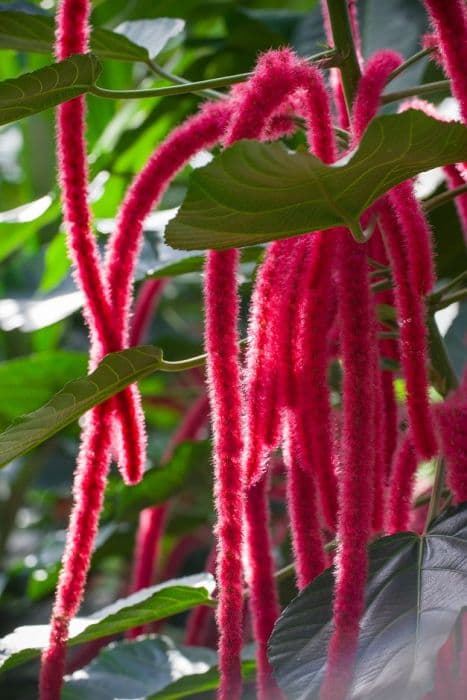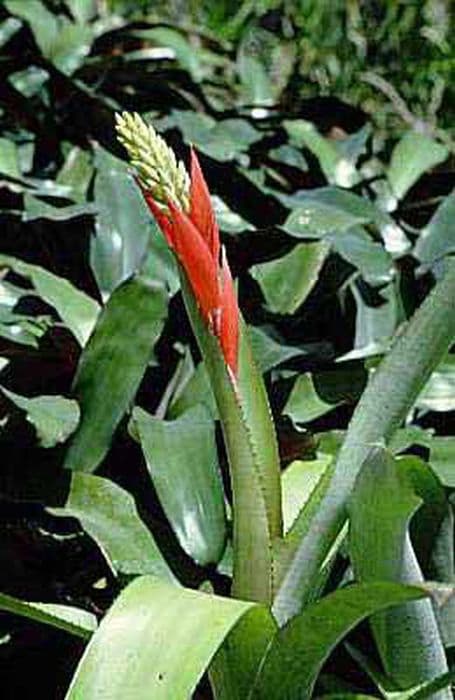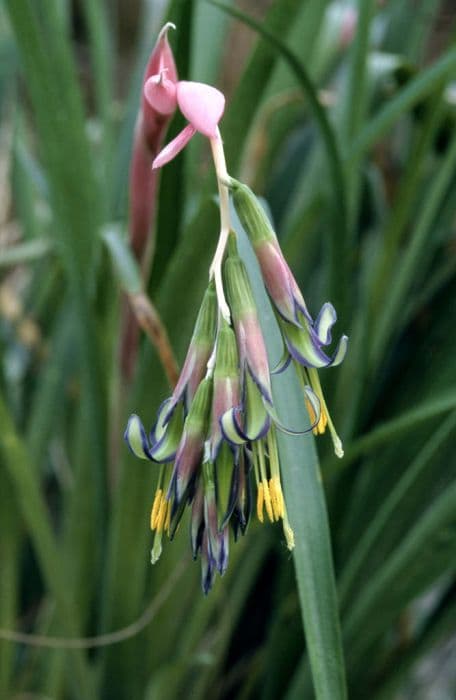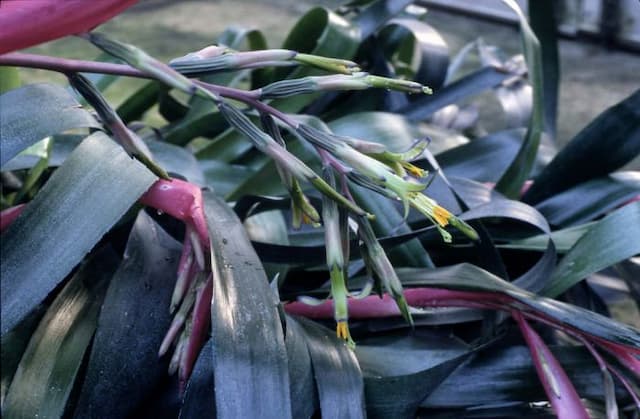Cactus-dwelling air plant Tillandsia cacticola

ABOUT
T. cacticola is an evergreen, epiphytic perennial, to 30cm tall. with a rosette of silvery-white linear leaves, up to 40cm long, tapering to a fine point. Spikes, up to 30cm tall, bear lilac-lavender bracts from which cream-coloured flowers are produced over a long period
About this plant
 Names
NamesFamily
Bromeliaceae
Synonyms
Air Plant, Cacticola Air Plant
Common names
Tillandsia cacticola
 Characteristics
CharacteristicsLife cycle
Perennials
Foliage type
Evergreen
Color of leaves
Varies
Flower color
Pink
Height
0.33 feet (0.1 meters)
Spread
0.5 feet (0.15 meters)
Plant type
Bromeliad
Hardiness zones
9
Native area
Peru
Benefits
 General Benefits
General Benefits- Low Maintenance: Tillandsia cacticola, commonly known as Air Plant, requires minimal watering and no soil, making it easy to care for.
- Adaptability: It can easily adapt to a variety of lighting conditions, although it prefers bright, indirect light.
- Decorative: Offers a unique and exotic aesthetic that can enhance the decor of a home or office.
- Space Efficiency: Being small and versatile, it doesn't take up much space and can be placed almost anywhere.
- Pet Friendly: Non-toxic to cats and dogs, making it a safe choice for pet owners.
- Enhances Humidity: Can help maintain a desirable level of indoor humidity when grouped with other air plants or houseplants.
- Propagation: Easy to propagate from offsets or "pups," allowing for an increase in your plant collection or sharing with friends.
 Medical Properties
Medical PropertiesThis plant is not used for medical purposes.
 Air-purifying Qualities
Air-purifying QualitiesThis plant is not specifically known for air purifying qualities.
 Other Uses
Other Uses- The Tillandsia cacticola can be used to create intriguing jewelry, such as pendant necklaces or earrings, by encapsulating small specimens in resin.
- This plant serves as an educational tool for botany students learning about epiphytic life cycles and adaptations in arid environments.
- An artistic medium for painters and illustrators who may use the intricate patterns of the leaves as inspiration for designs and textures in their artwork.
- Ornamental decoration for wedding venues, especially for those seeking a rustic or desert-inspired theme, by incorporating the plant into centerpieces or bouquets.
- As a living sculpture, minimalist designers can arrange several tillandsias into geometric forms to create ever-evolving art pieces.
- They can be used as natural Christmas tree ornaments, particularly for a smaller and more environmentally conscious holiday display.
- In photography, the unique shape and texture of Tillandsia cacticola makes it an interesting subject for macro-photography or to add an organic element to still-life compositions.
- The plant acts as a bioindicator in ecosystems where it is native, signaling changes in humidity, temperature, and air quality over time to researchers.
- Used in terrariums as an anchor plant, it provides structure and creates a habitat for small creatures such as insects or miniature reptiles.
- For culinary presentation, chefs may use the Tillandsia cacticola as an exotic garnish for specialty dishes, although the plant itself is not edible.
Interesting Facts
 Feng Shui
Feng ShuiThe Tillandsia cacticola, commonly known as air plant, according to Feng Shui, can be used to bring a sense of freedom and purity to a space because they do not need soil to grow. As symbols of adaptability and resourcefulness, they are best placed in areas of your home where you want to promote these qualities, like your home office or study.
 Zodiac Sign Compitability
Zodiac Sign CompitabilityThe Tillandsia cacticola, commonly known as air plant, is not used in astrology practice.
 Plant Symbolism
Plant Symbolism- Resilience and Independence: The Tillandsia cacticola, commonly known as the Air Plant, is able to grow without soil and draws water and nutrients directly from the air through its leaves, symbolizing an adaptable and self-sufficient nature.
- Air Purification: As an air plant, it is believed to improve air quality by filtering and purifying the surrounding atmosphere, representing cleansing and restoration.
- Unique Beauty: The exotic and unusual appearance of the Air Plant, often with silver-gray leaves and stunning blooms, signifies uniqueness and an appreciation for the uncommon and distinctive.
- Freedom and Non-Attachment: Because this plant does not root in traditional soil, it symbolizes a free spirit and the ability to thrive beyond traditional environments or constraints.
- Harmony with Nature: The Tillandsia cacticola's natural tendency to grow on other plants without harming them represents symbiosis and living in harmony with nature rather than exploiting it.
 Water
WaterTillandsia, commonly known as air plants, require watering about once a week by soaking in room temperature water for 5 to 10 minutes. In drier conditions or during hotter seasons, soaking twice a week may be necessary. After soaking, gently shake off any excess water and allow the plant to dry completely. Do not use more than half a gallon of water for soaking as these plants do not need to be submerged; they only need enough to cover them. It is crucial to ensure that the water reaches the center of the plant and saturates all the leaves.
 Light
LightAir plants prefer bright, indirect light. A spot near a window that receives filtered sunlight, or under the canopy of a shady tree if growing outdoors, is ideal. Direct sunlight can cause the leaves to burn, so avoid placing your Tillandsia in an area where it will be exposed to the harsh afternoon sun.
 Temperature
TemperatureThe ideal temperature for a Tillandsia is between 50°F and 90°F. They can survive in temperatures as low as 30°F and as high as 100°F, but prolonged exposure to extremes can be detrimental to their health. The most comfortable range is where the average room temperature sits, typically between 60°F and 80°F.
 Pruning
PruningPruning Tillandsia is generally done to remove dead or damaged leaves and to maintain its appearance. It is best to prune after soaking the plant, which makes the leaves more pliable. Use a sharp pair of scissors and cut at an angle to mimic the natural leaf shape. Pruning can be done at any time of the year but is most beneficial during the plant’s growing season, in spring or early summer.
 Cleaning
CleaningAs needed
 Soil
SoilTillandsia cacticola, commonly known as Air Plant, does not require soil as it's an epiphyte. Instead, use mounts or supports that mimic tree branches. Aim for a pH of 5.5 to 6.0.
 Repotting
RepottingAir Plants, like Tillandsia cacticola, do not require traditional repotting. They attach to supports and may require remounting only if they outgrow their space or the mount deteriorates.
 Humidity & Misting
Humidity & MistingAir Plant thrives in high humidity conditions, ideally between 50-70%. Misting can help maintain the right humidity level for this Tillandsia species.
 Suitable locations
Suitable locationsIndoor
Mount on wood or place in a terrarium with bright, indirect light.
Outdoor
Hang in a shaded spot that mimics their natural tree-dwelling habitat.
Hardiness zone
9-11 USDA
 Life cycle
Life cycleTillandsia cacticola, commonly known as air plant, begins its life as a seed that disperses from the parent plant and often lodges in crevices of trees, rocks, or other structures. The seed germinates and grows into a small rosette of leaves, absorbing moisture and nutrients from the air through trichomes on its leaves. As it matures, the plant produces offsets, or "pups," at its base, which allows for vegetative reproduction. This air plant reaches maturity in several years and eventually produces a colorful inflorescence that attracts pollinators. After flowering, which is the peak of its life cycle, Tillandsia cacticola will set seed, completing its reproductive cycle, and then slowly die over time, while its pups continue to grow and repeat the life cycle.
 Propogation
PropogationPropogation time
Spring-Early Summer
The most popular method of propagating Tillandsia cacticola, commonly known as air plant, is through the process of offsets, also known as "pups." These pups usually form around the base of the mother plant after it has flowered. To propagate, the pups should be gently separated from the parent once they reach about one-third the size of the mother plant. This is often done by carefully pulling the pup away, ensuring that it has some roots attached if possible. The separated pup can then be placed in a well-ventilated area with indirect light and should be misted regularly until it is established. This usually takes a few weeks, after which the new plant can be cared for in the same manner as a mature air plant.









